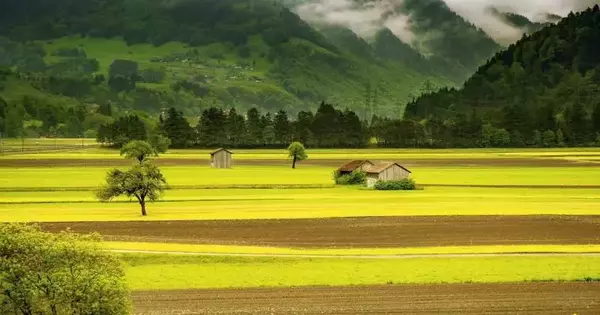The eighth billionth human was born on November 15, 2022. Climate change, natural resource depletion, soil erosion, and the use of fossil fuels in agriculture make the task even more difficult, prompting experts to ask: How will we feed everyone? We must change, but what should we change?
Barath Raghavan, an associate professor of computer science at USC Viterbi, is rethinking conventional farming methods by creating computational tools to assist farmers in designing, developing, and managing sustainable farming practices. More than 150 different edible plants are currently grown in Raghavan’s yard, a member of the group California Rare Fruit Growers. He began fusing his passions ten years ago by investigating how computing could increase the sustainability of agriculture.
This emerging field of study, dubbed “computational agroecology” by Raghavan, combines technology and farming knowledge to create a variety of agricultural landscapes based on natural ecosystems. The technique enables farmers to experiment with thousands of different potential designs to maximize food production without using pesticides derived from fossil fuels, from crop selection to planting to irrigation.
“Once we can think of a farm in this way, we can reframe a lot of research questions and farming planning issues as a search through all potential states the farm could wind up in, with some states being more desirable than others.”
Barath Raghavan, an associate professor of computer science at USC Viterbi,
Raghavan asked, “How can we create an ecosystem that is as productive and resilient as a natural forest, but produces food for people instead of wildlife?”
It’s a very challenging problem because creating an ecosystem is a very complicated, dynamic, and natural system. So that we can produce food in large quantities and sustainably, we are working to develop computing tools that can understand how ecosystems function.”.
A completely new perspective on agriculture
A new paper by Raghavan and his coauthors, which was published in PNAS Nexus on March 16, “proposes a totally new way to think about agriculture and the benefits it can have for research and farming,” according to Raghavan.
In this study, the researchers redefine agriculture as an exploration of all possible configurations of a system—in this case, agricultural land—in a “state space.”
Imagine a box of blocks, each of which could be red, blue, or yellow, to better comprehend the idea of a state space. All possible arrangements of these blocks, such as all red, all blue, all green, or any combination of the three colors, would be included in the state space.
In the same way, a state space for an agricultural system might include all the variables that the system might accept, such as crop or soil type, weather conditions, irrigation, fertilization, or pest control.
By combining various “blocks” or variables to see what works, agricultural researchers and farmers can explore the various options available to them. This effectively creates an agricultural “sandbox” where they can find the best configurations to boost crop yield, increase sustainability, and discover entirely new combinations of crops that thrive together.
The framework, for instance, enables analytics and machine learning that might let researchers analyze trends between crop yield and soil moisture content or model growing various crop varieties alongside one another for biodiversity.
When a farm is thought of in this way, Raghavan explained, “many research questions and farming planning questions can then be reframed as a search through the space of all possible states the farm could possibly end up in, with some states being more desirable than others.”
This enables us to evaluate and contrast various farming methods, investigate and combine techniques, and then search the state space in simulation for novel farming methods that have never been tried, where trial and error in the real world would be far too costly and time-consuming.
“Cheatin’ with nature,” as they say.
For instance, farmers in Southern California have just recently learned that it is possible to grow a lot of premium coffee in the spaces between avocado trees. However, the best way to do that—and perhaps even add a couple of additional crops that go well together—depends on the site.
According to Raghavan, “Each farmer doesn’t have the time or ability to conduct years of trial and error to determine the best way to grow a half-dozen crops on their land.”
Instead, a farmer could specify an objective — such as a diversified harvest with high yield and potentially high profit for a specific plot of land — and have the system explore the state space and produce potential plant mixtures, placements, and management techniques that meet the farmer’s criteria.
The procedure, according to Raghavan, is like “playing a chess game with nature, but one that is both competitive and collaborative.”.
“Nature is also moving while you’re making moves on the chessboard that represents your property. One crop will be destroyed by pests, while another will be harmed by flooding. We are creating a computational framework that enables you to investigate all the potential strategies for “playing” this chess match with nature so that we can choose the best one for your particular piece of land.
With researchers and farmers, the team is currently discussing potential use cases in order to incorporate specific use cases and create software that can make it simple to simulate and explore state spaces.
More information: Bryan Runck et al, State Spaces for Agriculture: A Meta-systematic Design Automation Framework, PNAS Nexus (2023). DOI: 10.1093/pnasnexus/pgad084





